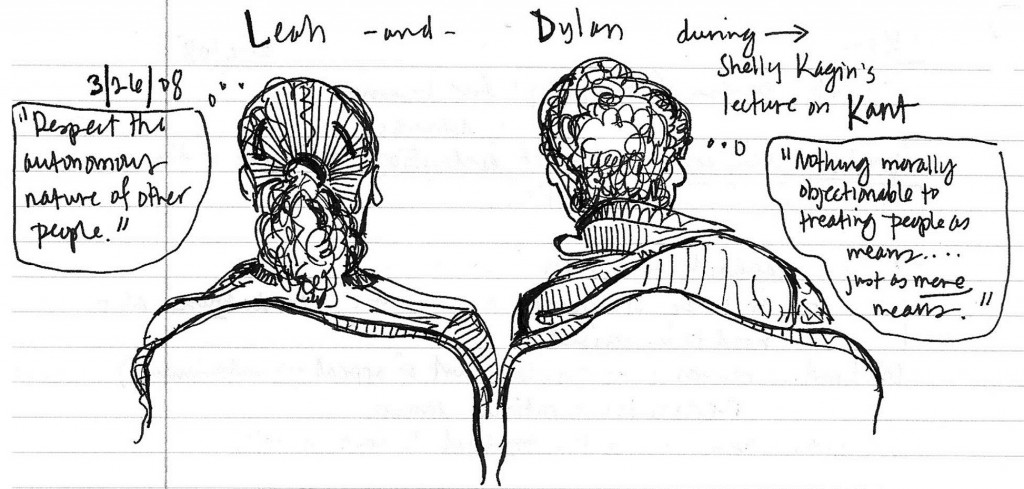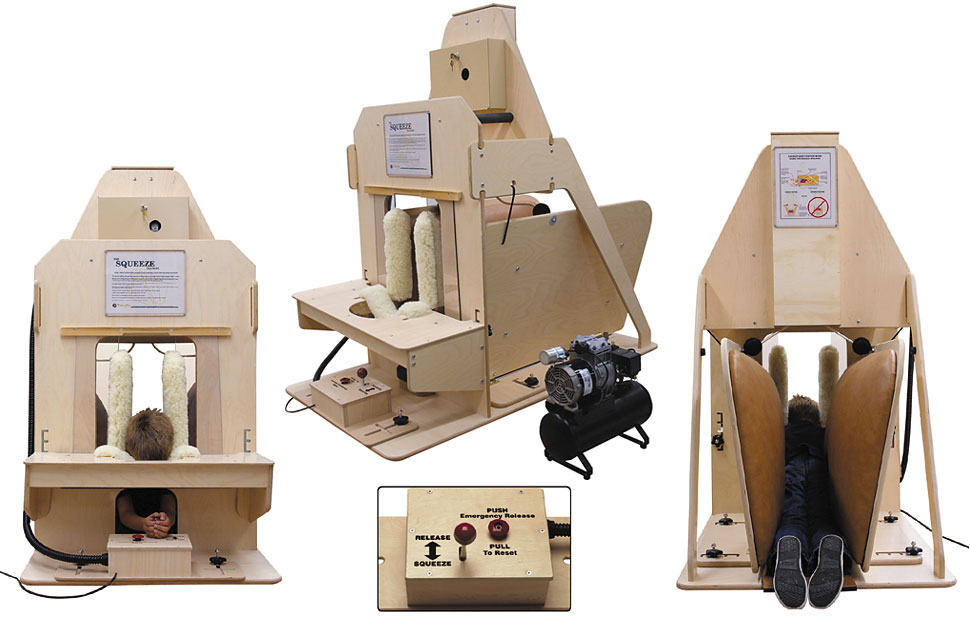I’ve been trying to work out exactly how I feel about Cuddlr, the new app that connects partners for a bout of platonic cuddling. On the one hand, I keep trying to find ways to promote more non-sexual touch. On the other hand, this particular solution gives me a wiggins, and I’ve been trying to put my finger on why. Here’s how Salon describes the app:
You log on, link up with your Facebook profile and start browsing for nearby cuddle partners. If someone looks especially smush-able, you send them a cuddle invite and they have 15 minutes to accept it. If all goes well, the app then leads you to each other for a body-pressing sesh in public or private, wherever you want. Afterward, you evaluate the cuddle, which allows users to warn each other off bad cuddlers, a category that could quite plausibly include anything from someone with bad personal hygiene to someone with roving hands.
I don’t think that cuddling between strangers would entirely miss the ends I think of cuddling normally serving. At baseline, Cuddlr dates would probably be on par with Temple Grandin’s squeeze box (pictured at the top of the post). Temple Grandin noticed that cows were calmed by walking through squeeze chutes, whose narrow passages applied firm, deep pressure along their sides. Grandin was uncomfortable being touched or held, but reaped some of the benefits of a squeeze chute for herself when she built a squeeze box that allowed her to lie down and tighten boards and cushions around herself.
Objectifying Others
If a box can provide simple, physical comfort (as does sitting in tight spaces, under heavy blankets, etc, at least in my case), it doesn’t seem at all implausible to me that a stranger could be used to the same ends, providing comfort even in the absence of an emotional connection. The thing that makes me uncomfortable isn’t the idea that Cuddlr wouldn’t work but that it would work by reducing my cuddling partner to the status of a mere squeeze box — an object, not an ends in themself.

This is largely the same concern/objection I have to hook-up culture, where it seems easy to reduce a partner to a masturbatory aid, which squicks me out even if both people are doing it and are ok with their partner just “looking for someone to get off with.” I would temper my concern a little by noting that friends of mine who do engage in NSA (no strings attached) hookups have told me that, even if they’re just seeking sexual release, they feel that the act of hooking up forges some kind of respectful connection with their partner, so they certainly don’t feel the same way as they would with a squeeze box or a sex doll. The reality of the other person’s own need prevents them from objectifying each other too much. I’m not in a position to evaluate this claim, so I just want to note it here.
Leapfrogging Intimacy
There’s another concern I have about Cuddlr, paid cuddlers, and cuddle parties (gatherings of people to snuggle together). Cuddles parties are described in The Atlantic as follows:
Cuddle parties, at least the official, documented ones, began in February 2004 in a tiny Manhattan apartment, facilitated by Marcia Baczynski and Reid Mihalko. From that came the birth of the official organization, Cuddle Party, which trains and supports cuddle party facilitators in 17 countries across the world. Cuddle parties vary in price (ours cost $10) and have 11 rules, ranging from keeping the space tidy to not saying “yes” to something if you’re actually feeling “maybe.”
Cuddle parties attract singles and couples, and, on occasion, families (there was a 16-year-old girl with her parents at the cuddle party I attended). You’re advised to bring snacks, pillows, and blankets, and aren’t allowed to wear shorts, tank tops, or lingerie. If you become sexually aroused, you’re advised not to act on it, since the purpose of a cuddle party, according to the website, is to “meet new people, to enjoy amazing conversations, to touch, to be touched, to have fun, to practice asking for what you want, to practice saying ‘no’ to what you don’t want—all in a setting structured to be a safe place for exploration and enjoyment. … You can even come to a Cuddle Party just to cuddle!”
All of these remind me of the tendency for people to hire prostitutes and then not have sex with them (more common than I expected, but I’m having trouble finding the survey of sex workers where I originally saw the statistic). Cuddling has certain purely physical pleasures (the kinds that a squeeze box can substitute for), but part of the reason we want to be touched is probably because it means we are intimate with/trusted by someone. Cuddling is desired because it’s a proxy variable for a certain kind of emotional connection.
But, humans have a really easy time mistaking proxy variables for the things they’re supposed to approximate, even if the two variables have become disconnected. I have trouble imagining enjoying a Cuddlr encounter myself, because it feels like there would be something cheating about it — that I would be receiving affection and intimacy that I hadn’t earned or properly developed. Your mileage may vary, but I think this would make me uncomfortable — it feels like wireheading.
By contrast, I enjoy and am not weirded out by other forms of casual contact between strangers, like ballroom dance and martial arts sparring, both of which involve a fair amount of touch, but don’t seem to parallel the kind of touch exchanged in an intimate relationship as closely as Cuddlr and cuddle parties do.
I’d be curious about your impressions of the app, mine still feel a little muddled.
Today is the third day of a novena to St. Therese of Lisieux, timed to end on her feast day (Oct 1), which is also the One Rose Invitation Day, sponsored by Imagine Sisters













